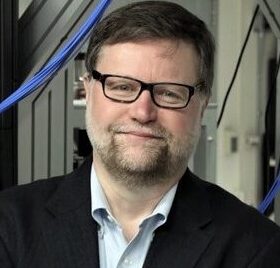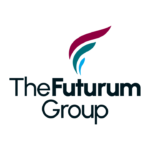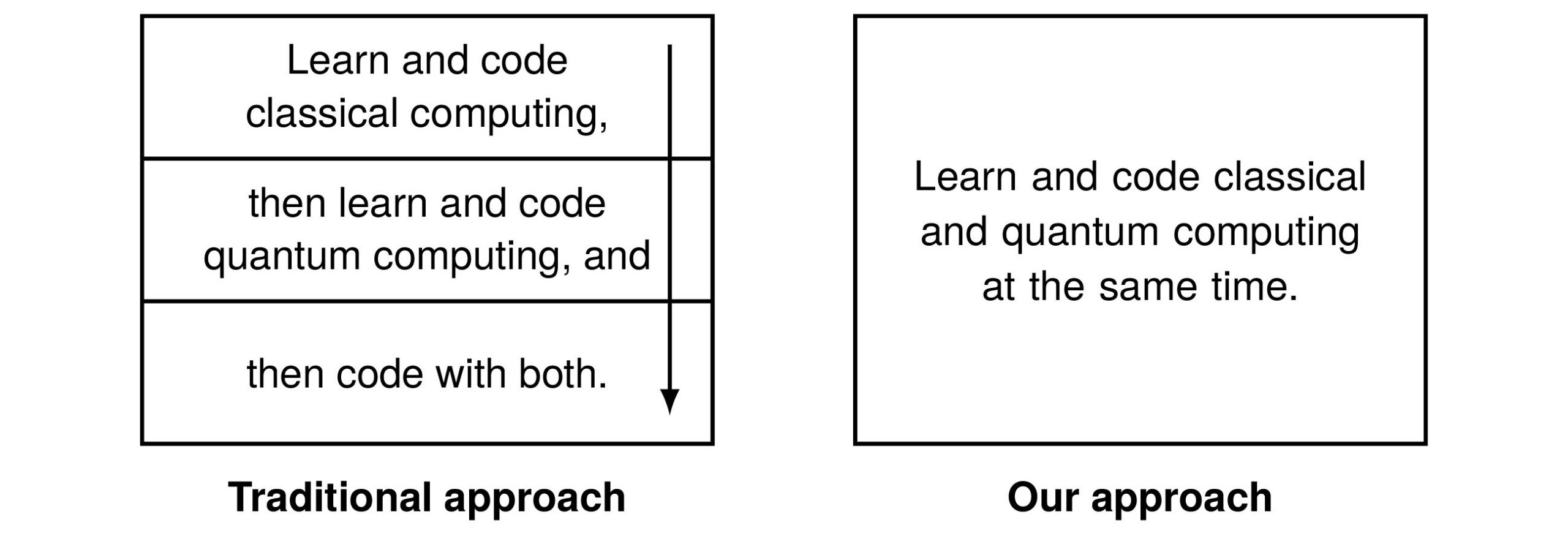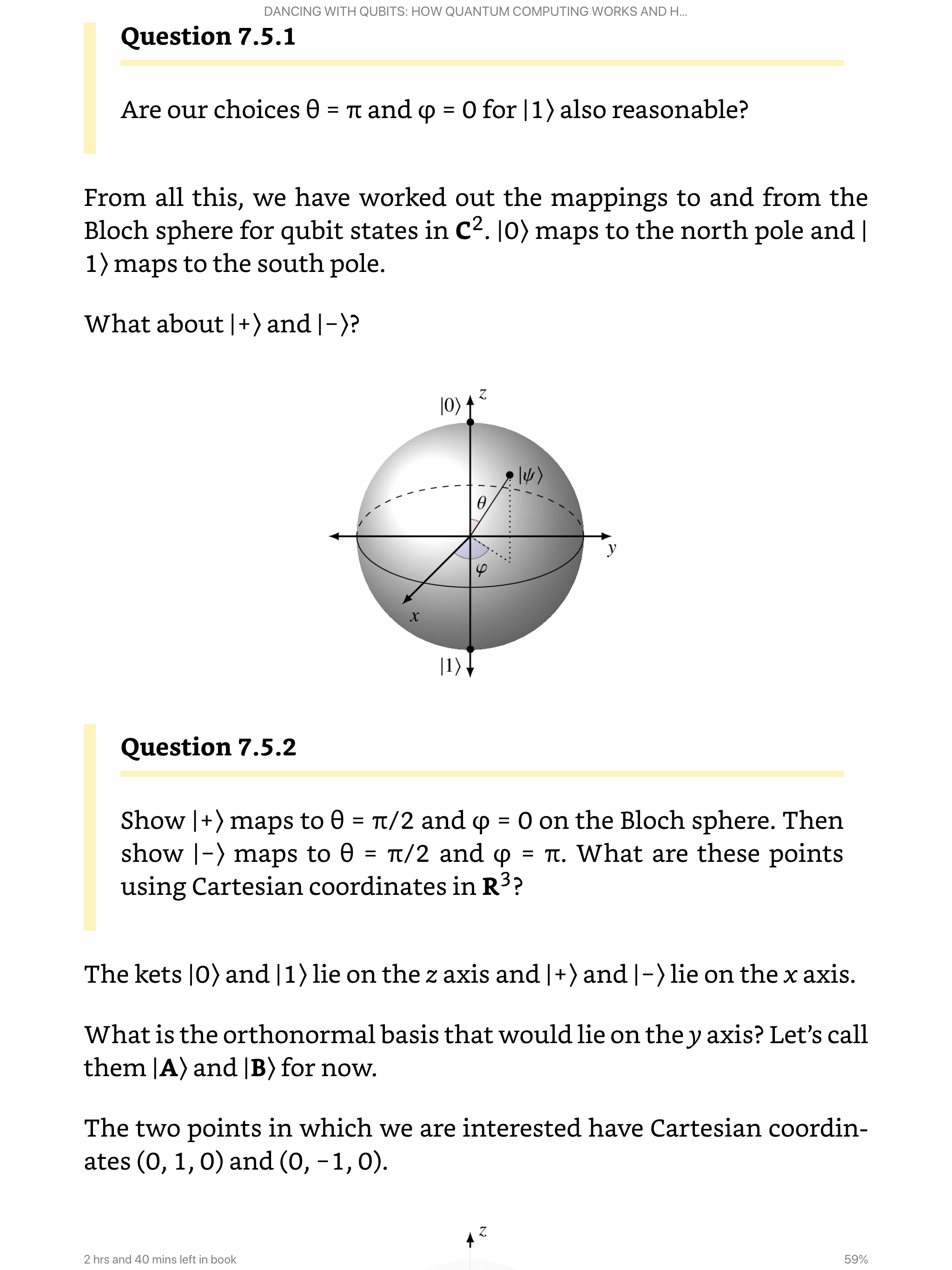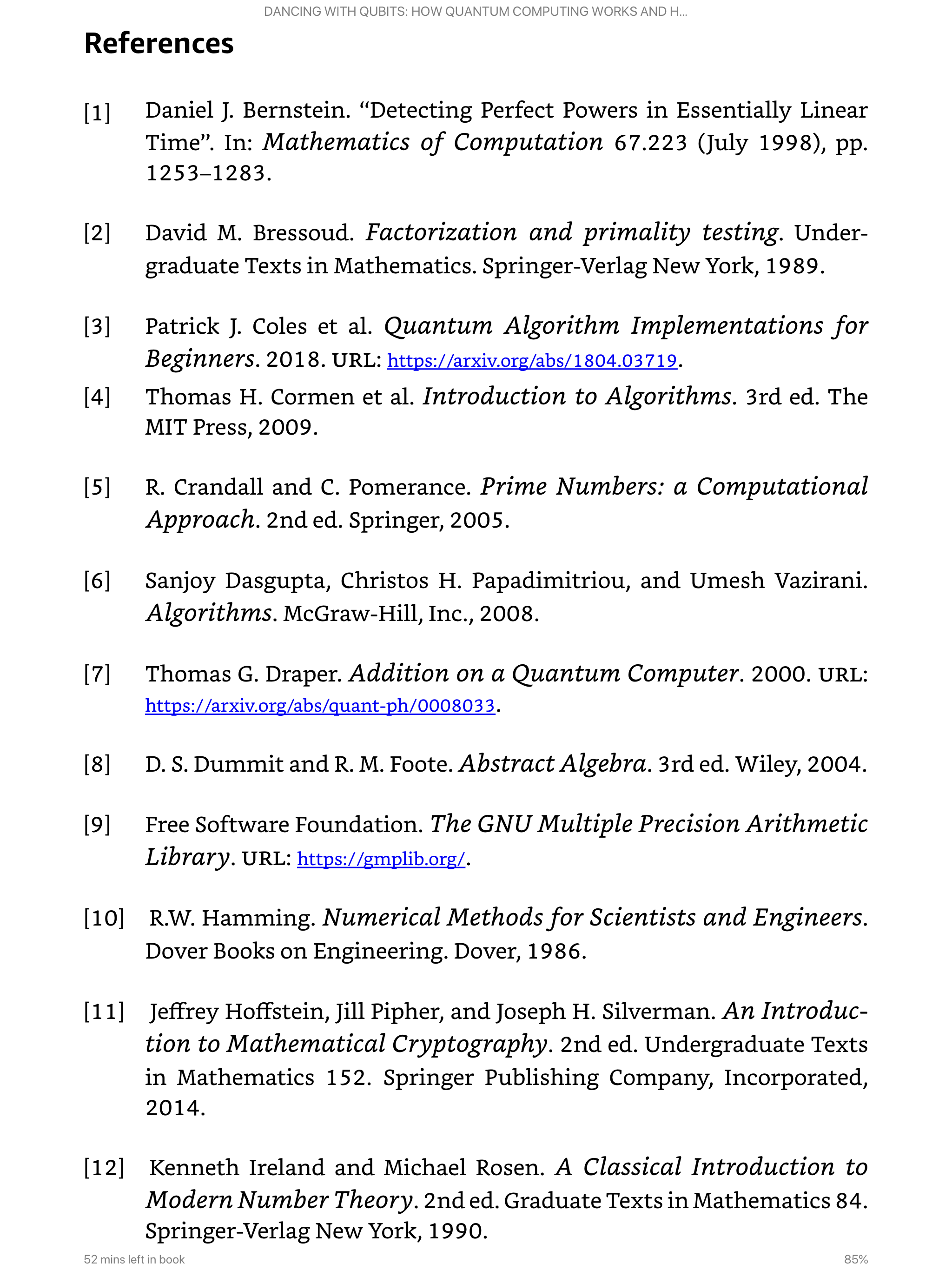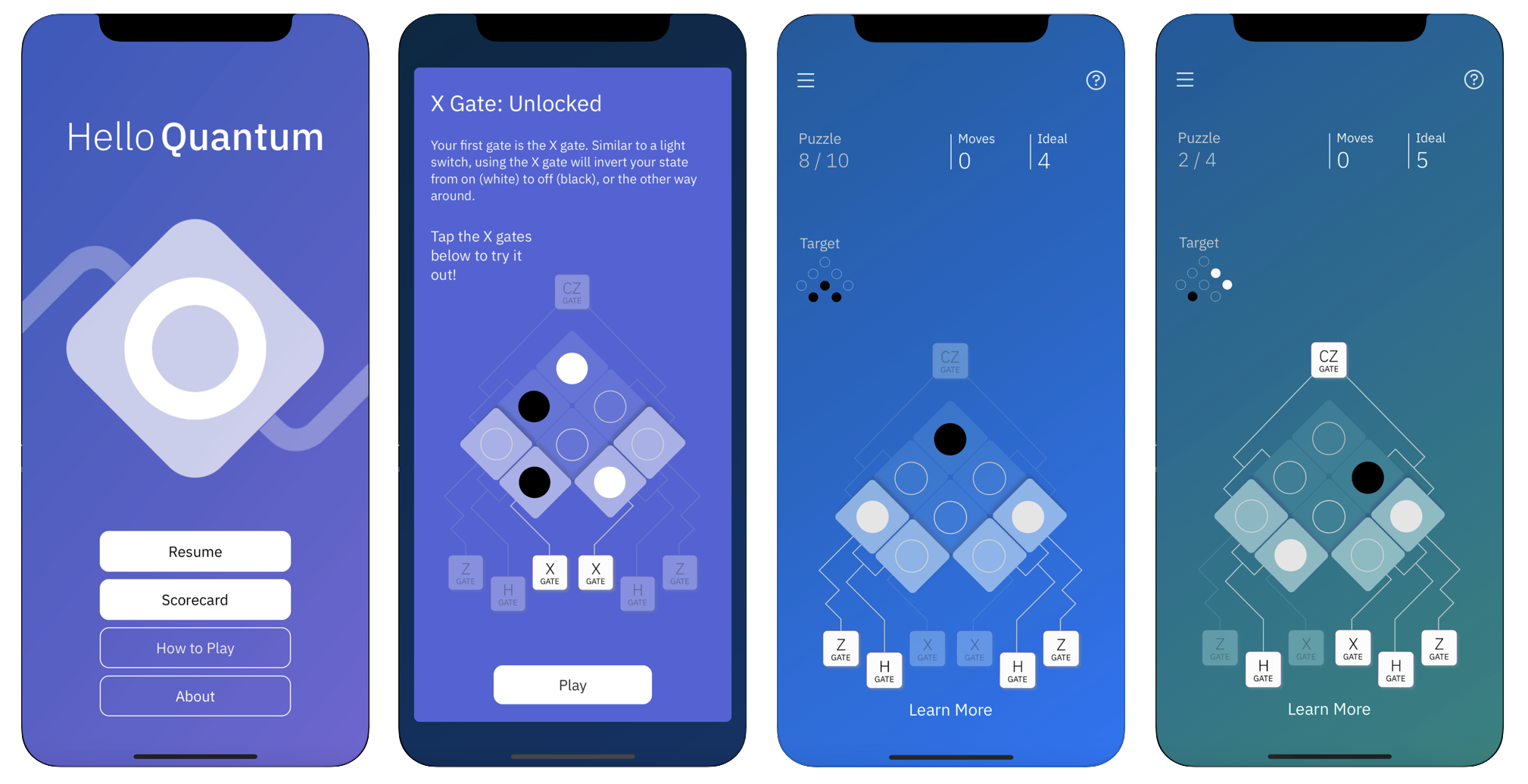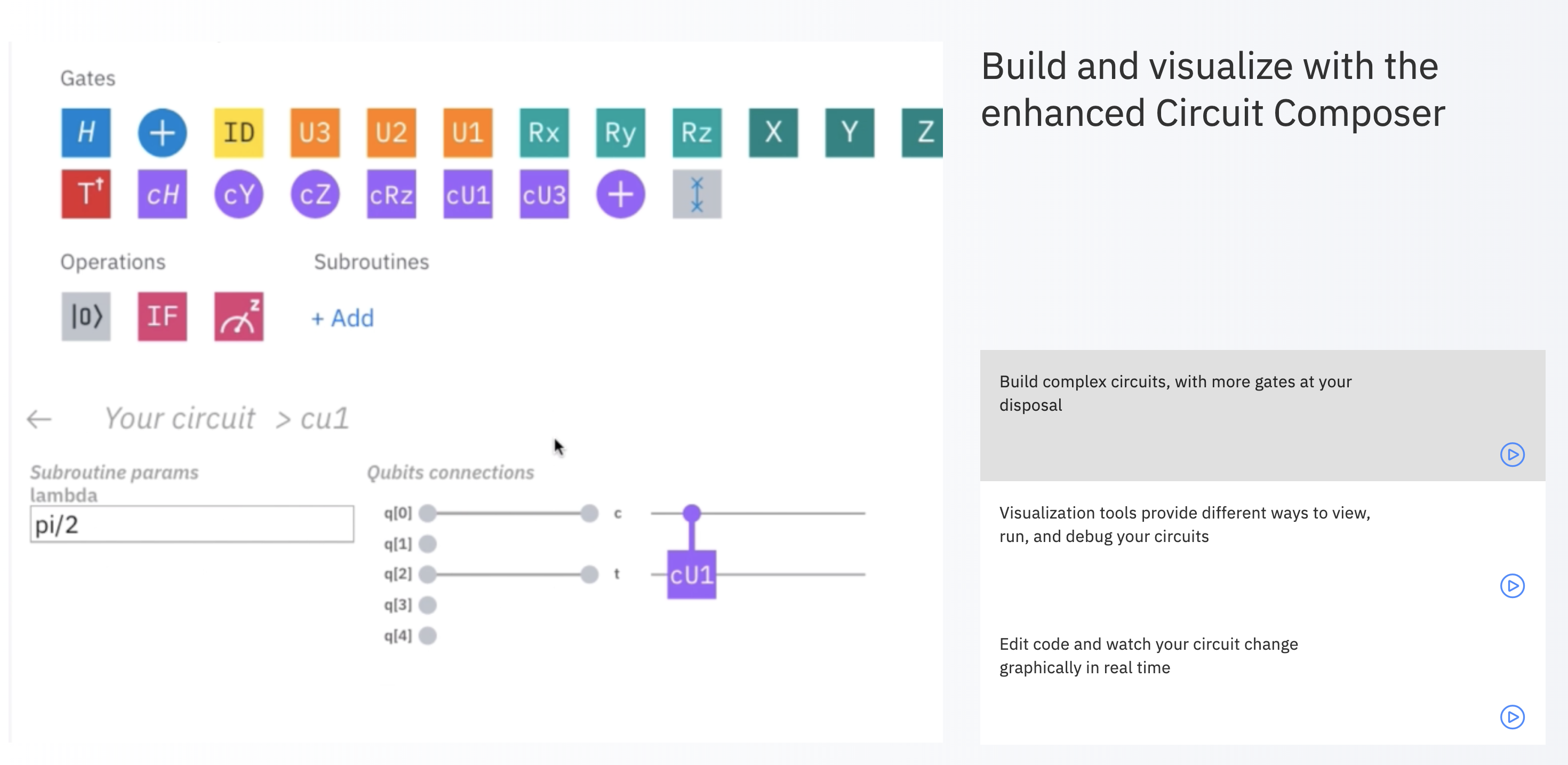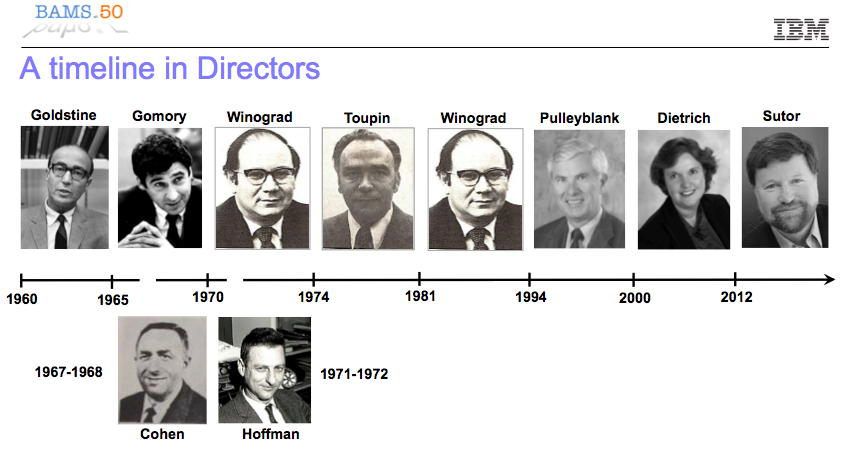A selection of the most important recent news, articles, and papers about quantum computing.
News, Articles, and Analyses
The Long-Term Forecast for Quantum Computing Still Looks Bright – Boston Consulting Group
Authors: Jean-François Bobier; Matt Langione; Cassia Naudet-Baulieu; Zheng Cui; and Eitoku Watanabe
“Is quantum computing finally nearing the point where it can fulfill its transformative potential? The answer, right now, is mixed.”
Quantum June 2024 Monthly Market Snapshot Report – The Futurum Group
Author: Dr. Bob Sutor
“Learn about market & tech developments in the quantum computing industry in June 2024, including improved qubits and product sales & delivery.”
Technical Papers and Preprints
Physics – Mechanical Coupling to Spin Qubits
(Wednesday, June 26, 2024) “A vibrating nanobeam could be used to share information between distant solid-state spin qubits, potentially allowing use of these qubits in complex computations.”
Physics – Measuring Qubits with “Time Travel” Protocol
(Thursday, June 27, 2024) “Quantum sensing can benefit from entanglement protocols that can be interpreted as allowing qubits to go backward in time to choose an optimal initial state.”
[2407.13012] CUAOA: A Novel CUDA-Accelerated Simulation Framework for the QAOA
Authors: Stein, Jonas; Blenninger, Jonas; Bucher, David; Eder, Josef Peter; Çetiner, Elif; Zorn, Maximilian; Linnhoff-Popien, Claudia
 (Wednesday, July 17, 2024) “The Quantum Approximate Optimization Algorithm (QAOA) is a prominent quantum algorithm designed to find approximate solutions to combinatorial optimization problems, which are challenging for classical computers. In the current era, where quantum hardware is constrained by noise and limited qubit availability, simulating the QAOA remains essential for research. However, existing state-of-the-art simulation frameworks suffer from long execution times or lack comprehensive functionality, usability, and versatility, often requiring users to implement essential features themselves. Additionally, these frameworks are primarily restricted to Python, limiting their use in safer and faster languages like Rust, which offer, e.g., advanced parallelization capabilities. In this paper, we develop a GPU accelerated QAOA simulation framework utilizing the NVIDIA CUDA toolkit. This framework offers a complete interface for QAOA simulations, enabling the calculation of (exact) expectation values, direct access to the statevector, fast sampling, and high-performance optimization methods using an advanced state-of-the-art gradient calculation technique. The framework is designed for use in Python and Rust, providing flexibility for integration into a wide range of applications, including those requiring fast algorithm implementations leveraging QAOA at its core. The new framework’s performance is rigorously benchmarked on the MaxCut problem and compared against the current state-of-the-art general-purpose quantum circuit simulation frameworks Qiskit and Pennylane as well as the specialized QAOA simulation tool QOKit. Our evaluation shows that our approach outperforms the existing state-of-the-art solutions in terms of runtime up to multiple orders of magnitude. Our implementation is publicly available at https://github.com/JFLXB/cuaoa and Zenodo.”
(Wednesday, July 17, 2024) “The Quantum Approximate Optimization Algorithm (QAOA) is a prominent quantum algorithm designed to find approximate solutions to combinatorial optimization problems, which are challenging for classical computers. In the current era, where quantum hardware is constrained by noise and limited qubit availability, simulating the QAOA remains essential for research. However, existing state-of-the-art simulation frameworks suffer from long execution times or lack comprehensive functionality, usability, and versatility, often requiring users to implement essential features themselves. Additionally, these frameworks are primarily restricted to Python, limiting their use in safer and faster languages like Rust, which offer, e.g., advanced parallelization capabilities. In this paper, we develop a GPU accelerated QAOA simulation framework utilizing the NVIDIA CUDA toolkit. This framework offers a complete interface for QAOA simulations, enabling the calculation of (exact) expectation values, direct access to the statevector, fast sampling, and high-performance optimization methods using an advanced state-of-the-art gradient calculation technique. The framework is designed for use in Python and Rust, providing flexibility for integration into a wide range of applications, including those requiring fast algorithm implementations leveraging QAOA at its core. The new framework’s performance is rigorously benchmarked on the MaxCut problem and compared against the current state-of-the-art general-purpose quantum circuit simulation frameworks Qiskit and Pennylane as well as the specialized QAOA simulation tool QOKit. Our evaluation shows that our approach outperforms the existing state-of-the-art solutions in terms of runtime up to multiple orders of magnitude. Our implementation is publicly available at https://github.com/JFLXB/cuaoa and Zenodo.”
[2407.13616] Quantum Local Search for Traveling Salesman Problem with Path-Slicing Strategy
Authors: Liu, Chen-Yu; Matsuyama, Hiromichi; Huang, Wei-hao; Yamashiro, Yu
 (Thursday, July 18, 2024) “We present novel path-slicing strategies integrated with quantum local search to optimize solutions for the Traveling Salesman Problem (TSP), addressing the limitations of current Noisy Intermediate-Scale Quantum (NISQ) technologies. Our hybrid quantum-classical approach leverages classical path initialization and quantum optimization to effectively manage the computational challenges posed by the TSP. We explore various path slicing methods, including k-means and anti-k-means clustering, to divide the TSP into manageable subproblems. These are then solved using quantum or classical solvers. Our analysis, performed on multiple TSP instances from the TSPlib, demonstrates the ability of our strategies to achieve near-optimal solutions efficiently, highlighting significant improvements in solving efficiency and resource utilization. This approach paves the way for future applications in larger combinatorial optimization scenarios, advancing the field of quantum optimization.”
(Thursday, July 18, 2024) “We present novel path-slicing strategies integrated with quantum local search to optimize solutions for the Traveling Salesman Problem (TSP), addressing the limitations of current Noisy Intermediate-Scale Quantum (NISQ) technologies. Our hybrid quantum-classical approach leverages classical path initialization and quantum optimization to effectively manage the computational challenges posed by the TSP. We explore various path slicing methods, including k-means and anti-k-means clustering, to divide the TSP into manageable subproblems. These are then solved using quantum or classical solvers. Our analysis, performed on multiple TSP instances from the TSPlib, demonstrates the ability of our strategies to achieve near-optimal solutions efficiently, highlighting significant improvements in solving efficiency and resource utilization. This approach paves the way for future applications in larger combinatorial optimization scenarios, advancing the field of quantum optimization.”
Share this:
Notable and Interesting Recent Quantum News, Articles, and Papers for Wednesday, July 17, 2024
A selection of the most important recent news, articles, and papers about quantum computing.
News, Articles, and Analyses
Infleqtion Leads the Way with First Quantum Computer Installation at NQCC — Infleqtion
(Tuesday, July 16, 2024) “We’re thrilled to announce the installation of our state-of-the-art neutral atom quantum computer at the National Quantum Computing Centre (NQCC). As the first company to deploy hardware under the NQCC’s quantum computing testbed programme, this milestone showcases our cutting-edge technology and de”
Oxford company unveils ‘pivotal’ quantum computing chip – BBC News
(Tuesday, July 16, 2024) “Oxford Ionics claim to have created the first quantum chip of its kind that could be mass-produced.”
Pritzker announces federal partner for quantum computing campus
(Wednesday, July 17, 2024) “CHICAGO (WCIA) — Illinois’ proposal to create a new quantum computing campus has a new partner with a federal agency. Governor J.B. Pritzker announced the partnership of Defense Advanced Research Projects Agency, part of the U.S. Department of Defense, with Illinois’ quantum computing campus Tuesday. The partnership is named Quantum Proving Ground. “The future of […]”
Technical Papers and Preprints
[2107.02151] Continuous Variable Quantum Algorithms: an Introduction
Authors: Buck, Samantha; Coleman, Robin; Sargsyan, Hayk
 (Monday, July 05, 2021) “Quantum computing is usually associated with discrete quantum states and physical quantities possessing discrete eigenvalue spectrum. However, quantum computing in general is any computation accomplished by the exploitation of quantum properties of physical quantities, discrete or otherwise. It has been shown that physical quantities with continuous eigenvalue spectrum can be used for quantum computing as well. Currently, continuous variable quantum computing is a rapidly developing field both theoretically and experimentally. In this pedagogical introduction we present the basic theoretical concepts behind it and the tools for algorithm development. The paper targets readers with discrete quantum computing background, who are new to continuous variable quantum computing.”
(Monday, July 05, 2021) “Quantum computing is usually associated with discrete quantum states and physical quantities possessing discrete eigenvalue spectrum. However, quantum computing in general is any computation accomplished by the exploitation of quantum properties of physical quantities, discrete or otherwise. It has been shown that physical quantities with continuous eigenvalue spectrum can be used for quantum computing as well. Currently, continuous variable quantum computing is a rapidly developing field both theoretically and experimentally. In this pedagogical introduction we present the basic theoretical concepts behind it and the tools for algorithm development. The paper targets readers with discrete quantum computing background, who are new to continuous variable quantum computing.”
Towards quantum enhanced adversarial robustness in machine learning | Nature Machine Intelligence
(Thursday, May 25, 2023) “To fulfil the potential of quantum machine learning for practical applications in the near future, it needs to be robust against adversarial attacks. West and colleagues give an overview of recent developments in quantum adversarial machine learning, and outline key challenges and future research directions to advance the field.”
[2407.02467] Error mitigation with stabilized noise in superconducting quantum processors
Authors: Kim, Youngseok; Govia, Luke C. G.; Dane, Andrew; Berg, Ewout van den; Zajac, David M.; Mitchell, Bradley; Liu, Yinyu; Balakrishnan, Karthik; Keefe, George; Stabile, Adam; Pritchett, Emily; Stehlik, Jiri; Kandala, Abhinav
 (Tuesday, July 02, 2024) “Pre-fault tolerant quantum computers have already demonstrated the ability to estimate observable values accurately, at a scale beyond brute-force classical computation. This has been enabled by error mitigation techniques that often rely on a representative model on the device noise. However, learning and maintaining these models is complicated by fluctuations in the noise over unpredictable time scales, for instance, arising from resonant interactions between superconducting qubits and defect two-level systems (TLS). Such interactions affect the stability and uniformity of device performance as a whole, but also affect the noise model accuracy, leading to incorrect observable estimation. Here, we experimentally demonstrate that tuning of the qubit-TLS interactions helps reduce noise instabilities and consequently enables more reliable error-mitigation performance. These experiments provide a controlled platform for studying the performance of error mitigation in the presence of quasi-static noise. We anticipate that the capabilities introduced here will be crucial for the exploration of quantum applications on solid-state processors at non-trivial scales.”
(Tuesday, July 02, 2024) “Pre-fault tolerant quantum computers have already demonstrated the ability to estimate observable values accurately, at a scale beyond brute-force classical computation. This has been enabled by error mitigation techniques that often rely on a representative model on the device noise. However, learning and maintaining these models is complicated by fluctuations in the noise over unpredictable time scales, for instance, arising from resonant interactions between superconducting qubits and defect two-level systems (TLS). Such interactions affect the stability and uniformity of device performance as a whole, but also affect the noise model accuracy, leading to incorrect observable estimation. Here, we experimentally demonstrate that tuning of the qubit-TLS interactions helps reduce noise instabilities and consequently enables more reliable error-mitigation performance. These experiments provide a controlled platform for studying the performance of error mitigation in the presence of quasi-static noise. We anticipate that the capabilities introduced here will be crucial for the exploration of quantum applications on solid-state processors at non-trivial scales.”
[2407.05178] A typology of quantum algorithms
Authors: Arnault, Pablo; Arrighi, Pablo; Herbert, Steven; Kasnetsi, Evi; Li, Tianyi
 (Saturday, July 06, 2024) “We draw the current landscape of quantum algorithms, by classifying about 130 quantum algorithms, according to the fundamental mathematical problems they solve, their real-world applications, the main subroutines they employ, and several other relevant criteria. The primary objectives include revealing trends of algorithms, identifying promising fields for implementations in the NISQ era, and identifying the key algorithmic primitives that power quantum advantage.”
(Saturday, July 06, 2024) “We draw the current landscape of quantum algorithms, by classifying about 130 quantum algorithms, according to the fundamental mathematical problems they solve, their real-world applications, the main subroutines they employ, and several other relevant criteria. The primary objectives include revealing trends of algorithms, identifying promising fields for implementations in the NISQ era, and identifying the key algorithmic primitives that power quantum advantage.”
Share this:
Notable and Interesting Recent Quantum News, Articles, and Papers for Saturday, July 13, 2024
A selection of the most important recent news, articles, and papers about quantum computing.
News and Articles
A breakthrough on the edge: One step closer to topological quantum computing
(Wednesday, July 10, 2024) “Researchers at the University of Cologne have achieved a significant breakthrough in quantum materials, potentially setting the stage for advancements in topological superconductivity and robust quantum computing / publication in ‘Nature Physics’”
Partnership boosts UK access to most powerful quantum technologies – UKRI
(Thursday, July 11, 2024) “UK industry and researchers will gain unparalleled access to the world’s most powerful quantum computers.”
Bob Sutor; Vice President and Practice Lead, Emerging Technologies, The Futurum Group will speak at IQT Quantum + AI in New York City October 29-30 – Inside Quantum Technology
(Friday, July 12, 2024) “Bob Sutor; Vice President and Practice Lead, Emerging Technologies, The Futurum Group will speak at IQT Quantum + AI in New York City October 29-30. Dr. Bob Sutor has been a technical leader and executive in the IT industry for over 40 years. He is a theoretical mathematician by training, with a Ph.D. from Princeton”
Technical Papers and Preprints
[2406.17653] Algorithmic Fault Tolerance for Fast Quantum Computing
 (Tuesday, June 25, 2024) “Fast, reliable logical operations are essential for the realization of useful quantum computers, as they are required to implement practical quantum algorithms at large scale. By redundantly encoding logical qubits into many physical qubits and using syndrome measurements to detect and subsequently correct errors, one can achieve very low logical error rates. However, for most practical quantum error correcting (QEC) codes such as the surface code, it is generally believed that due to syndrome extraction errors, multiple extraction rounds — on the order of the code distance d — are required for fault-tolerant computation. Here, we show that contrary to this common belief, fault-tolerant logical operations can be performed with constant time overhead for a broad class of QEC codes, including the surface code with magic state inputs and feed-forward operations, to achieve “algorithmic fault tolerance”. Through the combination of transversal operations and novel strategies for correlated decoding, despite only having access to partial syndrome information, we prove that the deviation from the ideal measurement result distribution can be made exponentially small in the code distance. We supplement this proof with circuit-level simulations in a range of relevant settings, demonstrating the fault tolerance and competitive performance of our approach. Our work sheds new light on the theory of fault tolerance, potentially reducing the space-time cost of practical fault-tolerant quantum computation by orders of magnitude.”
(Tuesday, June 25, 2024) “Fast, reliable logical operations are essential for the realization of useful quantum computers, as they are required to implement practical quantum algorithms at large scale. By redundantly encoding logical qubits into many physical qubits and using syndrome measurements to detect and subsequently correct errors, one can achieve very low logical error rates. However, for most practical quantum error correcting (QEC) codes such as the surface code, it is generally believed that due to syndrome extraction errors, multiple extraction rounds — on the order of the code distance d — are required for fault-tolerant computation. Here, we show that contrary to this common belief, fault-tolerant logical operations can be performed with constant time overhead for a broad class of QEC codes, including the surface code with magic state inputs and feed-forward operations, to achieve “algorithmic fault tolerance”. Through the combination of transversal operations and novel strategies for correlated decoding, despite only having access to partial syndrome information, we prove that the deviation from the ideal measurement result distribution can be made exponentially small in the code distance. We supplement this proof with circuit-level simulations in a range of relevant settings, demonstrating the fault tolerance and competitive performance of our approach. Our work sheds new light on the theory of fault tolerance, potentially reducing the space-time cost of practical fault-tolerant quantum computation by orders of magnitude.”
[2407.02553] Large-scale quantum reservoir learning with an analog quantum computer
 (Tuesday, July 02, 2024) “Quantum machine learning has gained considerable attention as quantum technology advances, presenting a promising approach for efficiently learning complex data patterns. Despite this promise, most contemporary quantum methods require significant resources for variational parameter optimization and face issues with vanishing gradients, leading to experiments that are either limited in scale or lack potential for quantum advantage. To address this, we develop a general-purpose, gradient-free, and scalable quantum reservoir learning algorithm that harnesses the quantum dynamics of neutral-atom analog quantum computers to process data. We experimentally implement the algorithm, achieving competitive performance across various categories of machine learning tasks, including binary and multi-class classification, as well as timeseries prediction. Effective and improving learning is observed with increasing system sizes of up to 108 qubits, demonstrating the largest quantum machine learning experiment to date. We further observe comparative quantum kernel advantage in learning tasks by constructing synthetic datasets based on the geometric differences between generated quantum and classical data kernels. Our findings demonstrate the potential of utilizing classically intractable quantum correlations for effective machine learning. We expect these results to stimulate further extensions to different quantum hardware and machine learning paradigms, including early fault-tolerant hardware and generative machine learning tasks.”
(Tuesday, July 02, 2024) “Quantum machine learning has gained considerable attention as quantum technology advances, presenting a promising approach for efficiently learning complex data patterns. Despite this promise, most contemporary quantum methods require significant resources for variational parameter optimization and face issues with vanishing gradients, leading to experiments that are either limited in scale or lack potential for quantum advantage. To address this, we develop a general-purpose, gradient-free, and scalable quantum reservoir learning algorithm that harnesses the quantum dynamics of neutral-atom analog quantum computers to process data. We experimentally implement the algorithm, achieving competitive performance across various categories of machine learning tasks, including binary and multi-class classification, as well as timeseries prediction. Effective and improving learning is observed with increasing system sizes of up to 108 qubits, demonstrating the largest quantum machine learning experiment to date. We further observe comparative quantum kernel advantage in learning tasks by constructing synthetic datasets based on the geometric differences between generated quantum and classical data kernels. Our findings demonstrate the potential of utilizing classically intractable quantum correlations for effective machine learning. We expect these results to stimulate further extensions to different quantum hardware and machine learning paradigms, including early fault-tolerant hardware and generative machine learning tasks.”
[2407.07202] Quantum Approximate Optimization: A Computational Intelligence Perspective
 (Tuesday, July 09, 2024) “Quantum computing is an emerging field on the multidisciplinary interface between physics, engineering, and computer science with the potential to make a large impact on computational intelligence (CI). The aim of this paper is to introduce quantum approximate optimization methods to the CI community because of direct relevance to solving combinatorial problems. We introduce quantum computing and variational quantum algorithms (VQAs). VQAs are an effective method for the near-term implementation of quantum solutions on noisy intermediate-scale quantum (NISQ) devices with less reliable qubits and early-stage error correction. Then, we explain Farhi et al.’s quantum approximate optimization algorithm (Farhi’s QAOA, to prevent confusion). This VQA is generalized by Hadfield et al. to the quantum alternating operator ansatz (QAOA), which is a nature-inspired (particularly, adiabatic) quantum metaheuristic for approximately solving combinatorial optimization problems on gate-based quantum computers. We discuss connections of QAOA to relevant domains, such as computational learning theory and genetic algorithms, discussing current techniques and known results regarding hybrid quantum-classical intelligence systems. We present a schematic of how QAOA is constructed, and also discuss how CI techniques can be used to improve QAOA. We conclude with QAOA implementations for the well-known maximum cut, maximum bisection, and traveling salesperson problems, which can serve as templates for CI practitioners interested in using QAOA.”
(Tuesday, July 09, 2024) “Quantum computing is an emerging field on the multidisciplinary interface between physics, engineering, and computer science with the potential to make a large impact on computational intelligence (CI). The aim of this paper is to introduce quantum approximate optimization methods to the CI community because of direct relevance to solving combinatorial problems. We introduce quantum computing and variational quantum algorithms (VQAs). VQAs are an effective method for the near-term implementation of quantum solutions on noisy intermediate-scale quantum (NISQ) devices with less reliable qubits and early-stage error correction. Then, we explain Farhi et al.’s quantum approximate optimization algorithm (Farhi’s QAOA, to prevent confusion). This VQA is generalized by Hadfield et al. to the quantum alternating operator ansatz (QAOA), which is a nature-inspired (particularly, adiabatic) quantum metaheuristic for approximately solving combinatorial optimization problems on gate-based quantum computers. We discuss connections of QAOA to relevant domains, such as computational learning theory and genetic algorithms, discussing current techniques and known results regarding hybrid quantum-classical intelligence systems. We present a schematic of how QAOA is constructed, and also discuss how CI techniques can be used to improve QAOA. We conclude with QAOA implementations for the well-known maximum cut, maximum bisection, and traveling salesperson problems, which can serve as templates for CI practitioners interested in using QAOA.”
[2407.07694] Scalable, high-fidelity all-electronic control of trapped-ion qubits
 (Wednesday, July 10, 2024) “The central challenge of quantum computing is implementing high-fidelity quantum gates at scale. However, many existing approaches to qubit control suffer from a scale-performance trade-off, impeding progress towards the creation of useful devices. Here, we present a vision for an electronically controlled trapped-ion quantum computer that alleviates this bottleneck. Our architecture utilizes shared current-carrying traces and local tuning electrodes in a microfabricated chip to perform quantum gates with low noise and crosstalk regardless of device size. To verify our approach, we experimentally demonstrate low-noise site-selective single- and two-qubit gates in a seven-zone ion trap that can control up to 10 qubits. We implement electronic single-qubit gates with 99.99916(7
(Wednesday, July 10, 2024) “The central challenge of quantum computing is implementing high-fidelity quantum gates at scale. However, many existing approaches to qubit control suffer from a scale-performance trade-off, impeding progress towards the creation of useful devices. Here, we present a vision for an electronically controlled trapped-ion quantum computer that alleviates this bottleneck. Our architecture utilizes shared current-carrying traces and local tuning electrodes in a microfabricated chip to perform quantum gates with low noise and crosstalk regardless of device size. To verify our approach, we experimentally demonstrate low-noise site-selective single- and two-qubit gates in a seven-zone ion trap that can control up to 10 qubits. We implement electronic single-qubit gates with 99.99916(7
Share this:
My Recent Futurum Group Publications: Thursday, July 11, 2024 Edition
Quantum in Context: Quantum Companies Rotate in New Leaders – The Futurum Group
“Learn which quantum computing companies have recently replaced their CEOs & reasons Boards of Directors make such changes.”
Study of Quantum Computing Energy Efficiency – The Futurum Group
“Learn about a study in France that will look at the energy efficiency of quantum computing systems versus HPC for well-known algorithms.”
Share this:
Notable Recent Quantum News, Articles, and Papers for Thursday, July 11, 2024
A selection of the most important recent news and articles about #quantumcomputing.
Fourier Quantum Process Tomography | npj Quantum Information
(Thursday, May 09, 2024) “The characterization of a quantum device is a crucial step in the development of quantum experiments. This is accomplished via Quantum Process Tomography, which combines the outcomes of different projective measurements to deliver a possible reconstruction of the underlying process. The tomography is typically performed by processing an overcomplete set of measurements and extracting the process matrix from maximum-likelihood estimation. Here, we introduce Fourier Quantum Process Tomography, a technique which requires a reduced number of measurements, and benchmark its performance against the standard maximum-likelihood approach. Fourier Quantum Process Tomography is based on measuring probability distributions in two conjugate spaces for different state preparations and projections. Exploiting the concept of phase retrieval, our scheme achieves a complete and robust characterization of the setup by processing a near-minimal set of measurements. We experimentally test the technique on different space-dependent polarization transformations, reporting average fidelities higher than 90% and significant computational advantage.”
Enabling Quantum Computing with AI | NVIDIA Technical Blog
(Sunday, May 12, 2024) “Building a useful quantum computer in practice is incredibly challenging. Significant improvements are needed in the scale, fidelity, speed, reliability, and programmability of quantum computers to…”
Kipu Quantum Acquires Quantum Computing Platform Built by Anaqor AG to Accelerate Development of Industrially Relevant Quantum Solutions
(Thursday, July 11, 2024) “/PRNewswire/ — Kipu Quantum, the worldwide leading quantum software company, announced today the strategic acquisition of PlanQK, the German quantum computing…”
Simulating the universe’s most extreme environments | IBM Quantum Computing Blog
“Scalable techniques for quantum simulations of high-energy physics.”
Quantum in Context: Quantum Companies Rotate in New Leaders – The Futurum Group
“Learn which quantum computing companies have recently replaced their CEOs & reasons Boards of Directors make such changes.”
EDF, Alice & Bob, Quandela and CNRS Partner to Optimize Quantum Computing’s Energy Efficiency
“PARIS, July 10, 2024 — French electric utility company EDF, in collaboration with quantum computing firms Quandela and Alice & Bob, and the French National Centre for Scientific Research (CNRS), has […]”
Study of Quantum Computing Energy Efficiency – The Futurum Group
“Learn about a study in France that will look at the energy efficiency of quantum computing systems versus HPC for well-known algorithms.”
Oxford Ionics breaks global quantum performance records
“Oxford Ionics has demonstrated the highest performing quantum chip in the world, which can be produced at scale in a standard semiconductor fabrication plant.”
Share this:
Quantum computing in my book Dancing with Python
My new book, Dancing with Python: Learn Python software development from scratch and get started with quantum computing, is now available from Amazon and other sources, and I recently posted the full table of contents. Though it is an introduction to Python, albeit with discussions of several advanced modules, it provides a unified approach with quantum computing.
My approach is described in the Preface:
How do you learn to code in this new world that involves both classical and quantum hardware?
One way to do it is to learn classical computing by itself. This is the traditional way of doing it, using a language such as C, C++, JavaScript, Java, Go, or Python. Along the way, you would learn how to use extra functionality in libraries of code along with the programming tools or from a third-party provider. Examples of these are the C++ Standard Library; the Java Platform, Enterprise Edition; the Python Standard Library; or the thousands of Python packages listed in the Python Package Index.
Once you have the philosophy, syntax, structure, and idioms of the classical programming language understood, you then learn quantum computing on top of that. For example, you could use the Qiskit open source quantum computing software development kit (SDK) along with Python. These mesh together and operate exceptionally well. Thousands of people are already Qiskit coders. If you know Python, this is a great approach.
But what if you are learning to code or have only a small amount of experience? What if I could offer you the chance to learn classical and quantum computing in a unified manner? Would it be useful if I could help you understand the concepts of both so that you don’t see them as different disciplines? That’s what I do in this book.
I talk about aspects of quantum computing throughout the book and in many places I provide pointers to sections in my quantum computing book Dancing with Qubits. That book is not a prerequisite for Dancing with Python, but the referenced sections will help you learn more about the topics if you wish to go deeper.
I first talk about qubits, “quantum bits”, in section 1.11. The main chapters that discuss quantum computing are 9 and 11:
9 Understanding Gates and Circuits
Classical computers use logical gates to manipulate bits. Using them, we assemble circuits to implement more complicated processes like addition and multiplication. Eventually, we get all the software that runs on computers everywhere.
Quantum computers use qubits to significantly extend the power of bits, as we saw in section 1.11. We assemble these into quantum circuits to implement algorithms.
There is a strong connection between classical and quantum computing, and a quantum computing system is a classical computing system extended with one or more quantum devices. These devices are the physical implementations of qubits and the software and hardware that control them.
This chapter examines bits and qubits, gates that operate upon them, and how we assemble them into circuits.
9.1 The software stack
9.2 Boolean operations and bit logic gates
9.3 Logic circuits
9.4 Simplifying bit expressions
9.5 Universality for bit gates
9.6 Quantum gates and operations
9.7 Quantum circuits
9.8 Universality for quantum gates
9.9 Summary
11 Searching for the Quantum Improvement
By considering new approaches and getting clever, we can develop classical algorithms that are faster than you might have expected. Using quantum techniques, we can go a step further: perform some operations faster than seems possible.
This chapter compares classical and quantum search techniques to see how extending our basic information unit from the bit to the qubit can show remarkable improvements. Note that I only discuss mainstream “universal” quantum computing and not limited-purpose systems that perform operations like simulated annealing.
11.1 Classical searching
11.2 Quantum searching via Grover
11.3 Oracles
11.4 Inversion about the mean
11.5 Amplitude amplification
11.6 Searching over two qubits
11.7 Summary
If you wish to learn more about quantum computing after reading this book, I suggest you look at
- my Dancing with Qubits book
- Robert Loredo’s Learn Quantum Computing with Python and IBM Quantum Experience: A hands-on introduction to quantum computing and writing your own quantum programs with Python
- the online Qiskit Textbook
Share this:
Availability of my book Dancing with Python and its table of contents
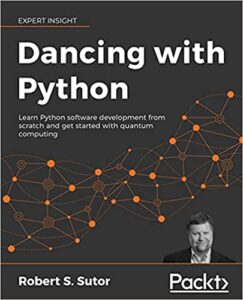
My new book Dancing with Python: Learn Python software development from scratch and get started with quantum computing is now available for purchase from Amazon and Packt Publishing.
Develop skills in Python by implementing exciting algorithms, including mathematical functions, classical searching, data analysis, plotting data, machine learning techniques, and quantum circuits.
Key Features
Learn Python basics to write elegant and efficient code
Create quantum circuits and algorithms using Qiskit and run them on quantum computing hardware and simulators
Delve into Python’s advanced features, including machine learning, analyzing data, and searching
Contributors
About the author
About the reviewer
Contents
List of Figures
Preface
Why did I write this book?
For whom did I write this book?
What does this book cover?
What conventions do I use in this book?
Get in touch
1 Doing the Things That Coders Do
1.1 Data
1.2 Expressions
1.3 Functions
1.4 Libraries
1.5 Collections
1.6 Conditional processing
1.7 Loops
1.8 Exceptions
1.9 Records
10 Contents
1.10 Objects and classes
1.11 Qubits
1.12 Circuits
1.13 Summary
I Getting to Know Python
2 Working with Expressions
2.1 Numbers
2.2 Strings
2.3 Lists
2.4 Variables and assignment
2.5 True and False
2.6 Arithmetic
2.7 String operations
2.8 List operations
2.9 Printing
2.10 Conditionals
2.11 Loops
2.12 Functions
2.13 Summary
3 Collecting Things Together
3.1 The big three
3.2 Lists
3.3 The joy of O(1)
3.4 Tuples
3.5 Comprehensions
3.6 What does “Pythonic” mean?
3.7 Nested comprehensions
3.8 Parallel traverse
3.9 Dictionaries
3.10 Sets
3.11 Summary
4 Stringing You Along
4.1 Single, double, and triple quotes
4.2 Testing for substrings
4.3 Accessing characters
4.4 Creating strings
4.5 Strings and iterations
4.6 Strings and slicing
4.7 String tests
4.8 Splitting and stripping
4.9 Summary
5 Computing and Calculating
5.1 Using Python modules
5.2 Integers
5.3 Floating-point numbers
5.4 Rational numbers
5.5 Complex numbers
5.6 Symbolic computation
5.7 Random numbers
5.8 Quantum randomness
5.9 Summary
6 Defining and Using Functions
6.1 The basic form
6.2 Parameters and arguments
6.3 Naming conventions
6.4 Return values
6.5 Keyword arguments
6.6 Default argument values
6.7 Formatting conventions
6.8 Nested functions
6.9 Variable scope
6.10 Functions are objects
6.11 Anonymous functions
6.12 Recursion
6.13 Summary
7 Organizing Objects into Classes
7.1 Objects
7.2 Classes, methods, and variables
7.3 Object representation
7.4 Magic methods
7.5 Attributes and properties
7.6 Naming conventions and encapsulation
7.7 Commenting Python code
7.8 Documenting Python code
7.9 Enumerations
7.10 More polynomial magic
7.11 Class variables
7.12 Class and static methods
7.13 Inheritance
7.14 Iterators
7.15 Generators
7.16 Objects in collections
7.17 Creating modules
7.18 Summary
8 Working with Files
8.1 Paths and the file system
8.2 Moving around the file system
8.3 Creating and removing directories
8.4 Lists of files and folders
8.5 Names and locations
8.6 Types of files
8.7 Reading and writing files
8.8 Saving and restoring data
8.9 Summary
II Algorithms and Circuits
9 Understanding Gates and Circuits
9.1 The software stack
9.2 Boolean operations and bit logic gates
9.3 Logic circuits
9.4 Simplifying bit expressions
9.5 Universality for bit gates
9.6 Quantum gates and operations
9.7 Quantum circuits
9.8 Universality for quantum gates
9.9 Summary
10 Optimizing and Testing Your Code
10.1 Testing your code
10.2 Timing how long your code takes to run
10.3 Optimizing your code
10.4 Looking for orphan code
10.5 Defining and using decorators
10.6 Summary
11 Searching for the Quantum Improvement
11.1 Classical searching
11.2 Quantum searching via Grover
11.3 Oracles
11.4 Inversion about the mean
11.5 Amplitude amplification
11.6 Searching over two qubits
11.7 Summary
III Advanced Features and Libraries
12 Searching and Changing Text
12.1 Core string search and replace methods
12.2 Regular expressions
12.3 Introduction to Natural Language Processing
12.4 Summary
13 Creating Plots and Charts
13.1 Function plots
13.2 Bar charts
13.3 Histograms
13.4 Pie charts
13.5 Scatter plots
13.6 Moving to three dimensions
13.7 Summary
14 Analyzing Data
14.1 Statistics
14.2 Cats and commas
14.3 pandas DataFrames
14.4 Data cleaning
14.5 Statistics with pandas
14.6 Converting categorical data
14.7 Cats by gender in each locality
14.8 Are all tortoiseshell cats female?
14.9 Cats in trees and circles
14.10 Summary
15 Learning, Briefly
15.1 What is machine learning?
15.2 Cats again
15.3 Feature scaling
15.4 Feature selection and reduction
15.5 Clustering
15.6 Classification
15.7 Linear regression
15.8 Concepts of neural networks
15.9 Quantum machine learning
15.10 Summary
Appendices
A Tools
A.1 The operating system command line
A.2 Installing Python
A.3 Installing Python modules and packages
A.4 Installing a virtual environment
A.5 Installing the Python packages used in this book
A.6 The Python interpreter
A.7 IDLE
A.8 Visual Studio Code
A.9 Jupyter notebooks
A.10 Installing and setting up Qiskit
A.11 The IBM Quantum Composer and Lab
A.12 Linting
B Staying Current
B.1 python.org
B.2 qiskit.org
B.3 Python expert sites
B.4 Asking questions and getting answers
C The Complete UniPoly Class
D The Complete Guitar Class Hierarchy
E Notices
E.1 Photos, images, and diagrams
E.2 Data
E.3 Trademarks
E.4 Python 3 license
F Production Notes
References
Other Books You May Enjoy
Index
Index Formatting Examples
Python function, method, and property index
Python class index
Python module and package index
General index
Share this:
Call for papers: Education, Research, and Application of Quantum Computing – HICSS 2022

My IBM Quantum colleague Dr. Andrew Wack and I are hosting a minitrack at the Hawaii International Conference on System Sciences (HICSS) 2022.
The description of the minitrack is:
There is no question that quantum computing will be a technology that will spur breakthroughs in natural science, AI, and computational algorithms such as those used in finance. IBM, Google, Honeywell, and several startups are working hard to create the next generation of “supercomputers” based on universal quantum technology.
What exactly is quantum computing, how does it work, how do we teach it, how do we leverage it in education and research, and what will it take to achieve these quantum breakthroughs?
The purpose of this minitrack is to bring together educators and researchers who are working to bring quantum computing into the mainstream.
We are looking for reports that
- improve our understanding of how to integrate quantum computing into business, machine learning, computer science, and applied mathematics university curriculums,
- describe hands-on student experiences with the open-source Qiskit quantum software development kit, and
- extend computational techniques for business, finance, and economics from classical to quantum systems.
It is part of the Decision Analytics and Service Science track at HICSS.
Please consider submitting a report and sharing this Call for Papers with your colleagues.
Share this:
Dancing with Qubits: Quantum Computing and Finance update
In section 1.5 of my quantum computing book Dancing with Qubits, I discuss potential applications of the technology to financial services. An excellent survey article by my IBM Quantum colleagues is now on arXiv that updates and goes into much greater detail than what I covered.
“Quantum computing for Finance: state of the art and future prospects” by Daniel J. Egger, Claudio Gambella, Jakub Marecek, Scott McFaddin, Martin Mevissen, Rudy Raymond, Andrea Simonetto, Stefan Woerner, and Elena Yndurain has this abstract:
This paper outlines our point of view regarding the applicability, state of the art, and potential of quantum computing for problems in finance. We provide an introduction to quantum computing as well as a survey on problem classes in finance that are computationally challenging classically and for which quantum computing algorithms are promising. In the main part, we describe in detail quantum algorithms for specific applications arising in financial services, such as those involving simulation, optimization, and machine learning problems. In addition, we include demonstrations of quantum algorithms on IBM Quantum back-ends and discuss the potential benefits of quantum algorithms for problems in financial services. We conclude with a summary of technical challenges and future prospects.
I highly recommend it.
Share this:
IEEE Quantum Week and IBM Quantum

This year’s IEEE Quantum Week is planned for October 12-16, 2020, in Denver, Colorado.
IEEE Quantum Week is a multidisciplinary quantum computing venue where attendees will have the unique opportunity to discuss challenges and opportunities with quantum researchers, scientists, engineers, entrepreneurs, developers, students, practitioners, educators, programmers, and newcomers.
 The IBM Quantum team is well represented at the conference with a keynote from Jerry Chow. We also have 7 tutorials and 2 workshops.
The IBM Quantum team is well represented at the conference with a keynote from Jerry Chow. We also have 7 tutorials and 2 workshops.
Our tutorials are on the following topics:
- Quantum programming, an introduction
- Quantum machine learning for data scientists
- Quantum hardware control: a hands-on introduction
- Quantum algorithms for optimization
- Quantum algorithms for chemistry simulation
- Assessing the quality of qubits and quantum computers
- Serious Games for Quantum Computing
Our workshops are:
- Control and design of superconducting qubits
- Software for quantum applications, algorithms, and workflows
Registration is now open.
Share this:
The Amazon Kindle version of Dancing with Qubits is now available!
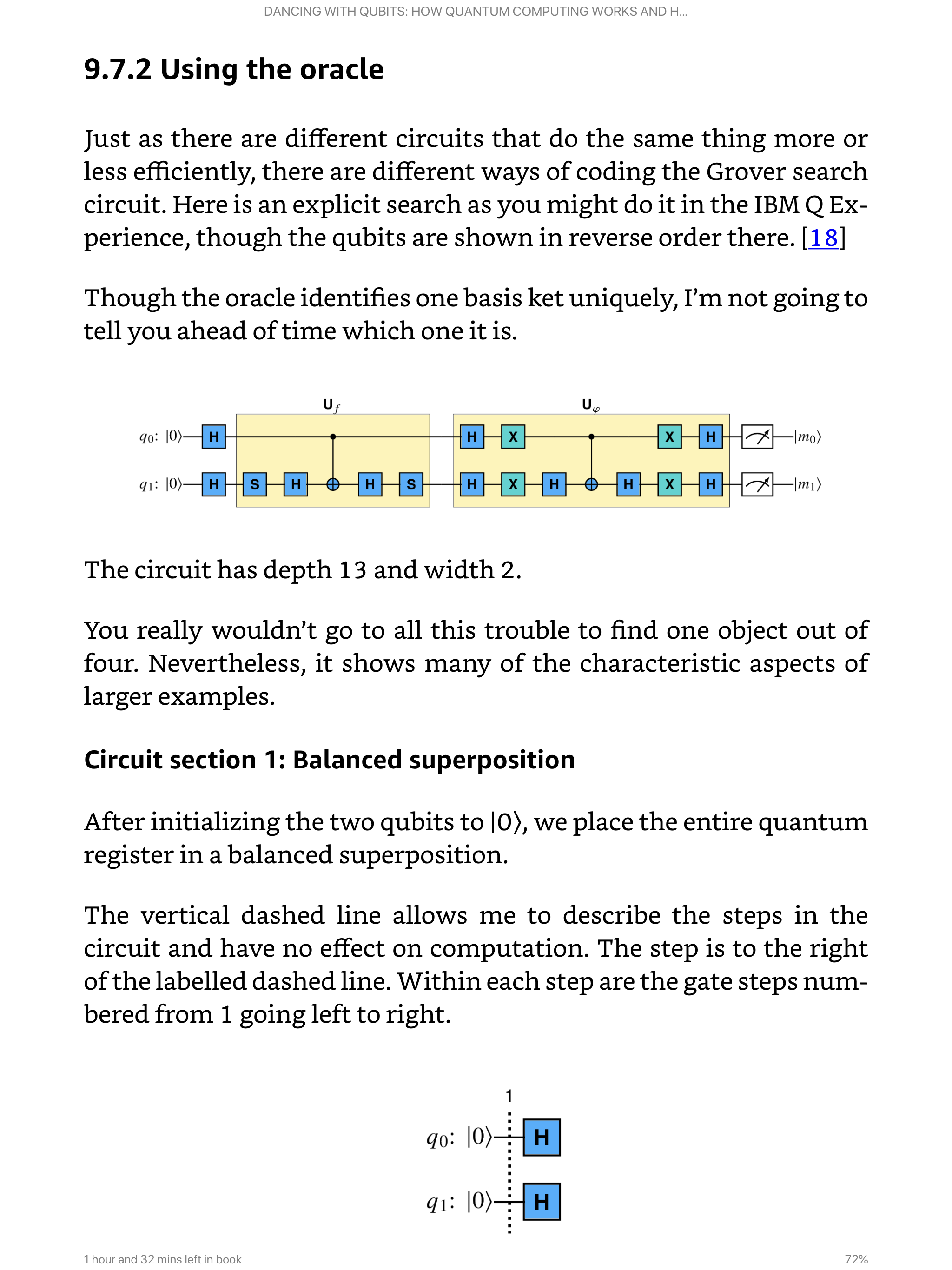 I’m pleased to announce that the Amazon Kindle version of my quantum computing book Dancing with Qubits is now available!
I’m pleased to announce that the Amazon Kindle version of my quantum computing book Dancing with Qubits is now available!
This book provides a comfortable and conversational introduction to quantum computing. I take you through the mathematics you need at a pace that allows you to understand not just “what” but also “why.” When we get to quantum computing, concepts like superposition and entanglement are shown to be natural ideas building on what we’ve already seen, and then illustrated via gates, circuits, and algorithms.
Throughout the book, I highlight important results, provide questions to answer, and give links to references where you can learn more. This allows the book to be used for self-study or as a textbook.
Important ideas like Quantum Volume are explained to give you a head start for reading more advanced texts and research papers. I provide many references to related content in math, physics, quantum computing, AI, and financial services. Dancing with Qubits concludes with questions for you to think about and ask experts so that you can gauge progress in the field over the next few years.
Features of the Kindle edition
- The text will get larger or smaller as you wish and you can change to a font that is comfortable for you to read.
- There are links throughout the book to other sections and the references in each chapter.
- Many of the references have links to external sources, such as arxiv or Nature for research papers.
- The content is in color, if your Kindle device supports it.
- You can search for terms throughout the book.
- I’ve maximized the number of mathematical expressions that are expressed textually (see below) to improve the reading experience.
The print version of Dancing with Qubits still has the full, rich mathematical formatting, albeit in black and white. In essence, whether you choose the print or Kindle version, the content is consistent and the formatting is the best I know how to produce for each medium.
Technical Notes
Here are a few comments about the production of the Kindle version, in case you are interested.
- The original content for Dancing with Qubits is in LaTeX. From that I can produce the black and white print version, a color PDF eBook, and an epub3 file from which the Amazon Kindle and several other MOBI eBook versions are created.
- I used make4ht and tex4ht to go from the LaTeX source files to HTML. While very powerful, the documentation is scarce and I spent many hours trying to figure how to make things work and then writing sed and Python scripts to fix things that were not quite right.
- I wrote Python scripts to create the various files needed for epub3, such as opf and navigation, and to break the 30,000+ line HTML file into smaller XHTML files. I used tidy several times to format the HTML and XHTML.
- The epub3 validators in several free epub3 editing apps either skipped problems entirely or gave false negatives. I found pagina EPUB-Checker to be the best software for validation.
- I wanted to maximize the amount of HTML formatting I could use and MathML is not available in a practical sense for all eBook formats. tex4ht produced very inconsistent results. So while I could express $x_2$ as x2 in the text without extra fonts, more two-dimensional objects like matrices had to be represented using images. I created macros to produce the right format based on what kind of document I was trying to produce.
- I used tikz/pgf and quantikz for the figures, especially the quantum circuit diagrams. I externalized the figures as JPEG images. It took quite a bit to figure out how to get them to be the right size for the Kindle version.
- Some math expressions in the book and chapter tables of contents have weird spacing if they involve subscripts or superscripts. This is an artifact of the Kindle software. This did not happen, for example, when I viewed the book in the Apple Books app.
Share this:
Some practical things you can do to learn about quantum computing
People often ask me “Where should I get started in order to learn about quantum computing?”. Here are several steps you can take. I work for IBM, so things I link to will often be to the IBM Quantum program. Also, I acknowledge that several of the links and videos toward the beginning involve me, but we’ll get through those quickly.
Watch some introductory videos
If you only watch one video, watch this one from WIRED with Talia Gershon:
This one with me is from early 2019 and discussed the IBM Q System One:
Finally, this video from CNBC with Professor Scott Aaronson of the University of Texas Austin, Martin Reynolds of Gartner, and me brings things up to date in January, 2020. Note that I personally do not support many of the statements about “Quantum Supremacy” (horrible label, supercomputers do have massive amounts of storage, off-by-15-million-percent math error):
Get a book
If you are really just getting started and want to systematically work through the required math at an easy and conversational pace, my book Dancing with Qubits should prepare you for more advanced material and give you a start to reading research papers. (Shameless self-plug.)
If you are a hard core physics and/or computer science person, you want to have Quantum Computation and Quantum Information: 10th Anniversary Edition 10th Anniversary ed. Edition by Michael A. Nielsen and Issac L. Chuang in your library. It’s a little old by now, but if you want to end up doing quantum computing research, you will likely have to become very familiar and comfortable with the contents. Other books to consider are Quantum Computing: A Gentle Introduction (good on algorithms, “gentle” is subjective!) and Quantum Computing for Computer Scientists (a bit dated and make sure you get a copy of the errata).
Play a game
Hello Quantum is available for Apple iOS and Android and will teach you the basics of how quantum gates and circuits work.
Build and run circuits with a real quantum computer
Quantum simulators have their place for basic education, experimentation, and debugging. Note, though, that a quantum simulator is to real quantum computer hardware as a TV console flight simulator is to a real plane. If you want a job as a pilot, I would prefer you knew how to fly an actual airplane.
The easiest way to get started without writing code is with the IBM Quantum Composer within the IBM Quantum Experience.
The IBM Quantum Experience has over 200,000 registered users, so you’ll be joining a very large community of beginner, intermediate, and advanced users.
Learn Python
If you are going to write quantum computing code, learn Python. As I write this, the latest version is 3.8. You want Python 3, not Python 2.
Learn Jupyter Notebooks
This is the modern way of developing full documents with interactive code, executions, graphics, videos, and visualizations. It’s used within the IBM Quantum Experience but also many other computational and AI applications. You are mainly interested in how to use it through a browser, not how to run and maintain the console.
Website (introductory): Introduction to Jupyter Notebooks
Write quantum computing code in Qiskit
Qiskit is the leading open source platform for developing quantum computing code and applications. It’s available on Github and available under the Apache 2,0 license. It’s had over 300,000 downloads but I’m recommending you use it through your browser on the IBM Cloud. As with the Composer, it is available through the IBM Quantum Experience.
Whether you want to download Qiskit or use it online, the easiest way to get get started is to watch the series of videos by Abe Asfaw.
From there, you can watch the other videos and also learn about the Qiskit Community.
At this point you are ready to work your way through the online open source Learn Quantum Computing through Qiskit.
Share this:
Dancing With Qubits, First Edition: What’s in the book
This morning I awoke to a very nice email from Tom Jacob, the Project Editor for my book at Packt Publishing. He said, in part,
We were able to successfully ship the book to our printers. …
Congratulations on achieving this milestone!
As I’ve mentioned before, my book was prepared using LaTeX and not Microsoft Word. I gave the publishers what was essentially the “camera-ready” PDF file from which to print. Hence the part about being able to “successfully ship” the book. In fact, I sent them the final PDF last night. I thought I was done on Friday, but yesterday I noticed an out-of-place citation in the section on the Bloch sphere and did a quick fix.
Now that the book is in production and there is absolutely nothing else I can do to fiddle with it, I’m going to show you the table of contents. I tried to have fun with some of the chapter and section titles. Once the book is published, I’ll be happy to discuss why I included this content or that.
Dancing with Qubits
How quantum computing works and
how it can change the world
Preface ix
1Â Why Quantum Computing? 1
1.1 The mysterious quantum bit 2
1.2 I’m awake! 4
1.3 Why quantum computing is different 7
1.4 Applications to artificial intelligence 9
1.5 Applications to financial services 15
1.6 What about cryptography? 18
1.7 Summary 21
IÂ Foundations 23
2 They’re Not Old, They’re Classics 25
2.1 What’s inside a computer? 26
2.2 The power of two 32
2.3 True or false? 33
2.4 Logic circuits 36
2.5 Addition, logically 39
2.6 Algorithmically speaking 42
2.7 Growth, exponential and otherwise 42
2.8 How hard can that be? 44
2.9 Summary 55
3Â More Numbers than You Can Imagine 57
3.1 Natural numbers 58
3.2 Whole numbers 60
3.3 Integers 62
3.4 Rational numbers 66
3.5 Real numbers 73
3.6 Structure 88
3.7 Modular arithmetic 94
3.8 Doubling down 96
3.9 Complex numbers, algebraically 97
3.10 Summary 103
4Â Planes and Circles and Spheres, Oh My 107
4.1 Functions 108
4.2 The real plane 111
4.3 Trigonometry 122
4.4 From Cartesian to polar coordinates 129
4.5 The complex “plane†129
4.6 Real three dimensions 133
4.7 Summary 134
5Â Dimensions 137
5.1 R2 and C1 139
5.2 Vector spaces 144
5.3 Linear maps 146
5.4 Matrices 154
5.5 Matrix algebra 166
5.6 Cartesian products 176
5.7 Length and preserving it 177
5.8 Change of basis 189
5.9 Eigenvectors and eigenvalues 192
5.10 Direct sums 198
5.11 Homomorphisms 200
5.12 Summary 204
6 What Do You Mean “Probably� 205
6.1 Being discrete 206
6.2 More formally 208
6.3 Wrong again? 209
6.4 Probability and error detection 210
6.5 Randomness 212
6.6 Expectation 215
6.7 Markov and Chebyshev go to the casino 217
6.8 Summary 221
IIÂ Quantum Computing 223
7Â One Qubit 225
7.1 Introducing quantum bits 226
7.2 Bras and kets 229
7.3 The complex math and physics of a single qubit 234
7.4 A non-linear projection 241
7.5 The Bloch sphere 248
7.6 Professor Hadamard, meet Professor Pauli 253
7.7 Gates and unitary matrices 265
7.8 Summary 266
8Â Two Qubits, Three 269
8.1 Tensor products 270
8.2 Entanglement 275
8.3 Multi-qubit gates 283
8.4 Summary 295
9Â Wiring Up the Circuits 297
9.1 So many gates 298
9.2 From gates to circuits 299
9.3 Building blocks and universality 305
9.4 Arithmetic 315
9.5 Welcome to Delphi 322
9.6 Amplitude amplification 324
9.7 Searching 330
9.8 The Deutsch-Jozsa algorithm 338
9.9 Simon’s algorithm 346
9.10 Summary 354
10Â From Circuits to Algorithms 357
10.1 Quantum Fourier Transform 358
10.2 Factoring 369
10.3 How hard can that be, again 379
10.4 Phase estimation 382
10.5 Order and period finding 388
10.6 Shor’s algorithm 396
10.7 Summary 397
11Â Getting Physical 401
11.1 That’s not logical 402
11.2 What does it take to be a qubit? 403
11.3 Light and photons 406
11.4 Decoherence 415
11.5 Error correction 423
11.6 Quantum Volume 429
11.7 The software stack and access 432
11.8 Simulation 434
11.9 The cat 439
11.10 Summary 441
12Â Questions about the Future 445
12.1 Ecosystem and community 446
12.2 Applications and strategy 447
12.3 Access 448
12.4 Software 449
12.5 Hardware 450
12.6 Education 451
12.7 Resources 452
12.8 Summary 453
Afterword 455
Appendices 458
AÂ Quick Reference 459
A.1 Common kets 459
A.2 Quantum gates and operations 460
BÂ Symbols 463
B.1 Greek letters 463
B.2 Mathematical notation and operations 464
CÂ Notices 467
C.1 Creative Commons Attribution 3.0 Unported (CC BY 3.0) 467
C.2 Creative Commons Attribution-NoDerivs 2.0 Generic (CC BY-ND 2.0) 468
C.3 Creative Commons Attribution-ShareAlike 3.0 Unported (CC BY-SA 3.0) 468
C.4 Los Alamos National Laboratory 469
C.5 Trademarks 469
DÂ Production Notes 471
Other Books You May Enjoy 473
Index 477
Changes, clarifications, and errata
Previous: Drawing quantum circuits
Next: What about the eBook?
| In December, 2019, Packt Publishing published my book Dancing with Qubits: How quantum computing works and how it can change the world. Through a series of blog entries, I talk about the writing and publishing process, and then about the content. |
Share this:
Dancing With Qubits, First Edition: Let me preface my remarks with …
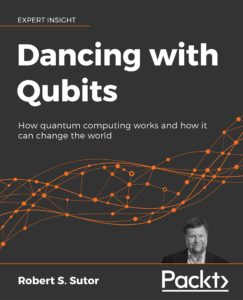 Way back in 1992, Springer-Verlag published my first book Axiom: The Scientific Computation System, co-authored with the late Richard D. Jenks. Since then I’ve thought of writing other books, but work and life in general caused enough inertia that I never got around to it.
Way back in 1992, Springer-Verlag published my first book Axiom: The Scientific Computation System, co-authored with the late Richard D. Jenks. Since then I’ve thought of writing other books, but work and life in general caused enough inertia that I never got around to it.
I first got involved with IBM’s quantum computing effort in early 2016. By 2018, I was again thinking of writing a book and this subject was an obvious candidate. How would I start? What would I say? What was my perspective on the topic given that there were already some excellent books?
To write a book, you have to start writing. This is obvious, but no less true and important. In the summer of 2018, I started writing what I thought would be the introduction to the book. My perspective was, and is, very much from the mathematical and computer science directions. To be clear, I am not a physicist. If I could produce a coherent introduction to what I thought the book would cover, I might convince myself that it would be worth the hundreds of hours it would take to complete the project.
When I recently announced that the book was available for pre-order, my industry colleague Jason Bloomberg asked:
“So where does it fall on the spectrum between ‘totally accurate yet completely impenetrable’ and ‘approachable by normal humans but a complete whitewash’?”
I responded:
“I bring you along … to give you the underlying science of quantum computing so you can then read the “totally accurate but formally impenetrable” texts.”
I decided that I would cover the basic math necessary to understand quantum computing, and then get into quantum bits (qubits), gates, circuits, and algorithms. Although readers with the necessary background (or perhaps a good memory of that background) can skip the mathematical fundamentals, I decided to take people through the algebra and geometry of complex numbers, linear algebra, and probability necessary to understand what qubits are and what you can do with them.
That early draft of the book’s introduction described roughly 15 chapters divided into three parts. The final book has 12 chapters and 2 parts. That introduction eventually became the Preface. Part III eventually became Chapter 1.
It’s much tighter than what I imagined it would be, but there is still material I could have covered. There’s a natural tendency to want to add more and more, but I kept asking myself “What is this book about? How deeply do I want to go? Am I getting off track? Will I ever finish?”.
As 2018 went on, I kept tweaking the introduction and I started talking to publishers. In November, I started writing what was then the first chapter. Although I started in Microsoft Word, which is overwhelmingly the format of choice for many publishers, I quickly switched to LaTeX. This produced a far more beautiful book, but also placed constraints on how I could publish the book.
With this as teaser, in future entries I’ll talk more about the writing process, choices I made, LaTeX packages I used and macros I wrote, deciding how to publish the book, and working with editors. Once the book is available, I’ll talk about the specific content and why I included what I did.
Next: Last minute tweaks to my quantum computing book cover
| In December, 2019, Packt Publishing published my book Dancing with Qubits: How quantum computing works and how it can change the world. Through a series of blog entries, I talk about the writing and publishing process, and then about the content. |
Share this:
Math and Analytics at IBM Research: 50+ Years
Soon after I arrived back in IBM Research last July after 13 years away in the Software Group and Corporate, I was shown a 2003 edition of the IBM Journal of Research and Development that was dedicated to the Mathematical Sciences group at 40. From that, I and others assumed that this year, 2013, was the 50th anniversary of the department.
I set about lining up volunteers to organize the anniversary events for the year and sent an email to our 300 worldwide members of what is now called the Business Analytics and Mathematical Sciences strategy area. Not long afterwards, I received a note from Alan Hoffman, a former director of the department, saying that he was pretty sure that the department had been around since 1958 or 59. So our 50th Anniversary became the 50+ Anniversary. Evidently mathematicians know the theory of arithmetic but don’t always practice it correctly
The first director of the department was Herman Goldstine who joined after working on the ENIAC computer and a stint at the Institute for Advanced Study in Princeton. Goldstine is pictured in the first photo on the right at a reception at the T.J. Watson Research Center in the early 1960s. Goldstine died in 2004, but all other directors of the department are still alive.
We decided that the first event of the year celebrating the (more than) half century of the department would be a reunion of the directors for a morning of panel discussions. This took place this last Wednesday, May 1, 2013.
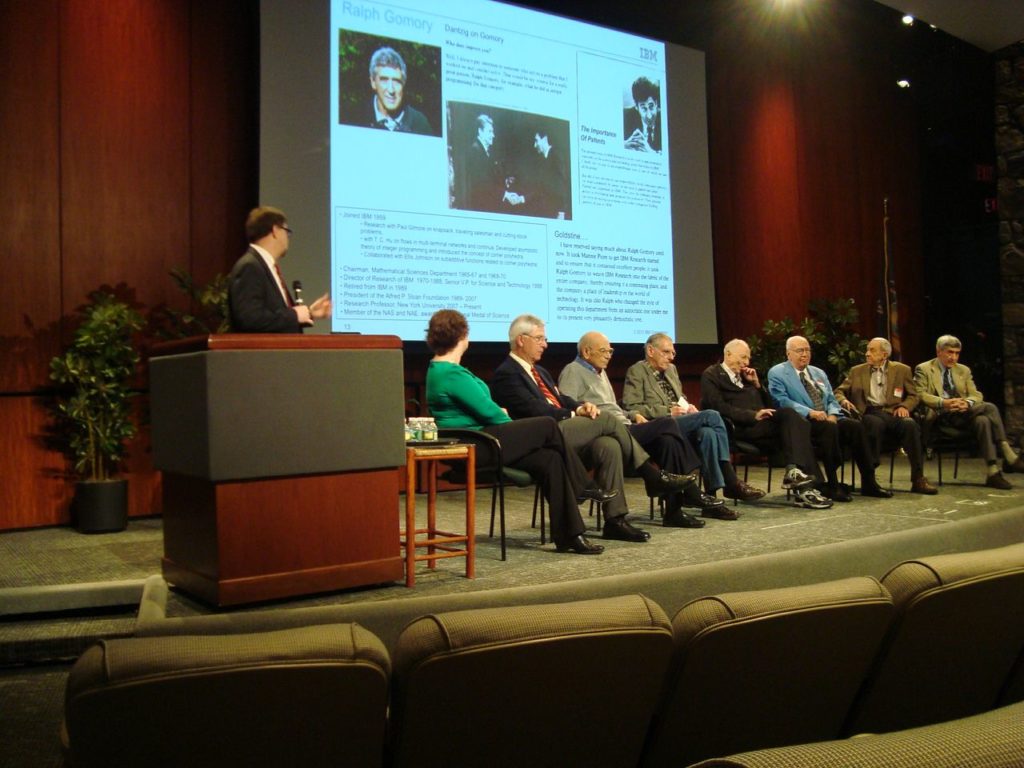
I started the day by giving a glimpse of what the department looks like today: the above-mentioned 300 Ph.D.s, software engineers, postdocs, and other staff distributed over the areas of optimization, analytics, visual analytics, and social business in 10 of IBM’s 12 global labs.
I then introduced our panel pictured in the photo above. From left to right we have me, Brenda Dietrich, 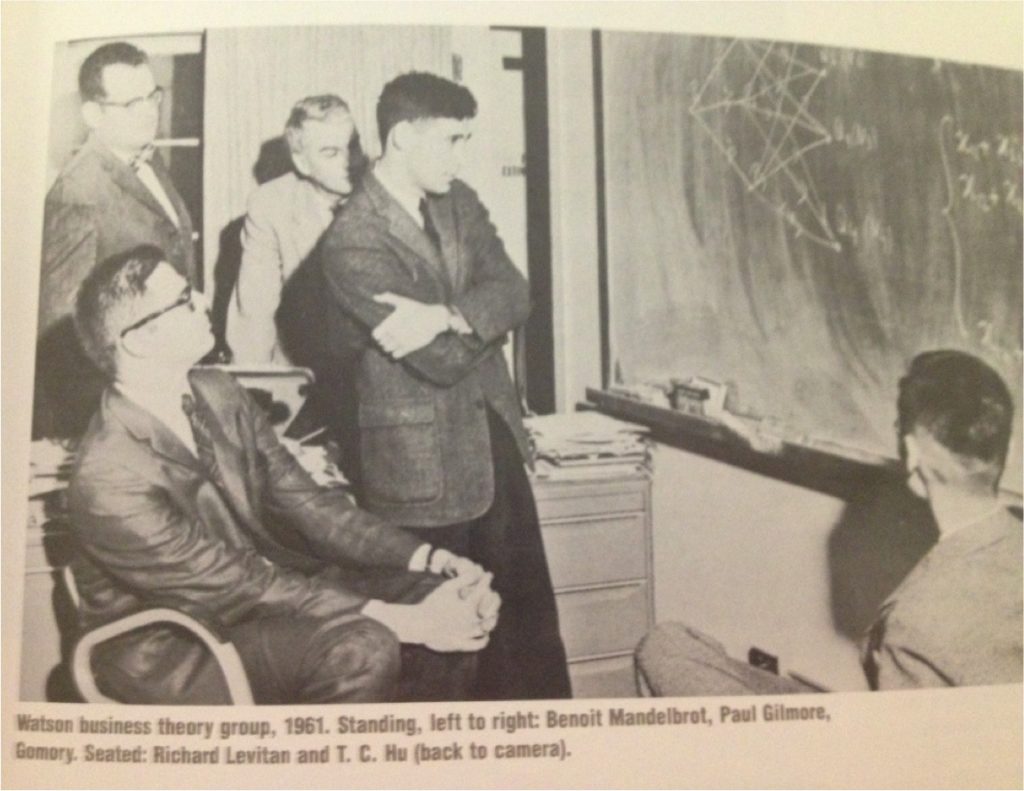
My goal for the discussion was to go back and look at some of the history and culture of the math department over the last five decades. I was hoping we would hear anecdotes and stories of what life was like, the challenges they faced, and the major successes and disappointments.
Other than a few questions I had prepared, I wasn’t sure where our conversation would go. The many researchers who joined us in the auditorium at the T. J. Watson Research Center in Yorktown Heights, NY, or via the video feed going out to the other worldwide labs would have a chance to ask questions near the end of the morning.
I’m not going to go over every question and answer but rather give you the gist of what we spoke about.
- Ralph Gomory reminded us that the department was started in a much different time, during the Cold War. The problems they were trying to solve using the hardware and the software of the day were often related highly confidential. However, every era of the department has had its own focus, burning problems to be solved, and operational environment.
- Hirsh Cohen got his inspiration for the mathematics he did by solving practical problems such as those related to the large mainframe-connected printers. Many people feel that mathematics shouldn’t stray too far from the concrete, but it is not that simple. This isn’t just applied mathematics, it is a way of looking for inspiration that may express itself in more theoretical ways. The panelists mentioned more than once that the original posers of business or engineering problems might not recognize the mathematics that was developed in response. (I think there is nothing wrong with theoretical mathematics with no direct connection to the physical world, but there are some areas of mathematical pursuit that I think are just silly and of marginal pure or applied interest.)
- In response to my question about balancing business needs with the desire to advance basic science, Shmuel Winograd told me I had asked the wrong question: it was about the integration of business with basic science, not a partitioning of time or resources between them. This very much sets the tone of how you manage such a science organization in a commercial company. The successful integration of these concerns may also be why IBM Research is pretty much the sole survivor of the industrial research labs from the 1950s and 1960s.
- There was general consensus that it is difficult to get a researcher to do science in an area that he or she fundamentally does not want to work. This was redirected to the audience members who were reminded to understand what they loved to do and then find a way to do it. (This sounded like a bit of a management challenge to me, and I suspect I’ll hear about it again.)
- Time gives a great perspective on the quality and significance of scientific work that is just not obvious while you are the middle of it. This is one of the reasons why retrospectives such as this can be so satisfying.
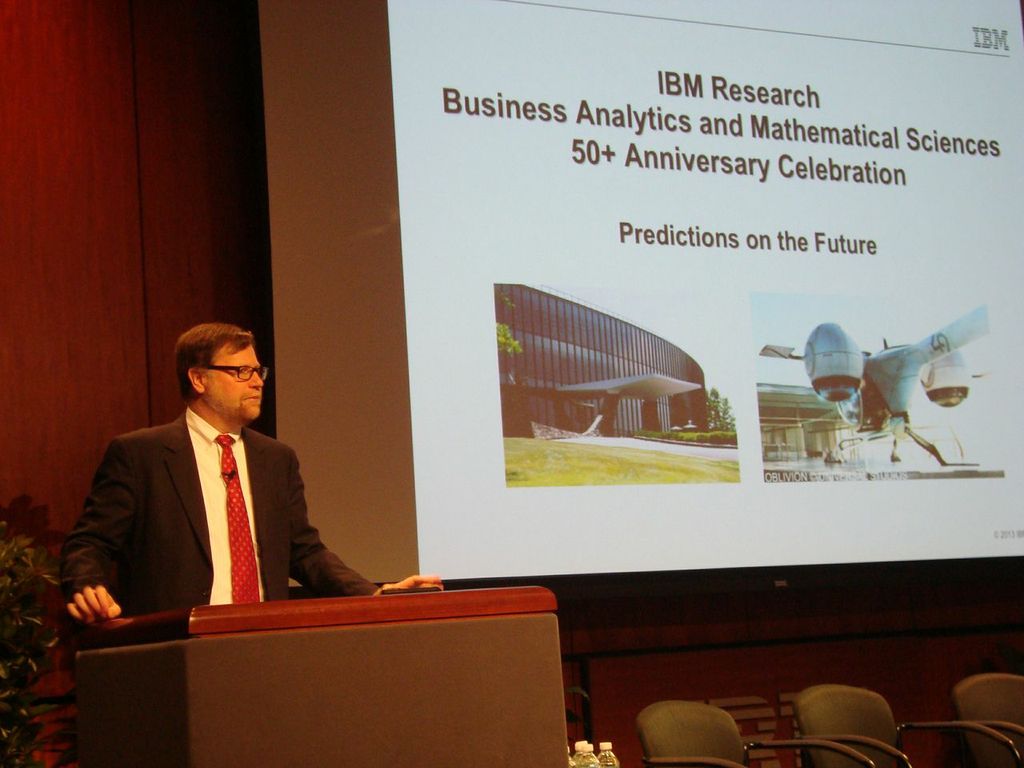
After the first panel and coffee break, we came back and I started the session looking at the future of the department instead of the history. We have an internal department social network community in IBM Connections and I started by summarizing some of the suggestions people came up with about what we’ll be doing in the department in five, ten, and twenty years.
Sustainability, robotic applications of cognitive computing, and mathematical algorithms for quantum computing were all suggested. Note that his was all fun speculation, not strategy development!
Eleni Pratsini, Director of Optimization Research, and Chid Apte, Director of Analytics Research, then each discussed technical topics that could be future areas for scientific research as well as having significant business use.
After the final Q&A session, we got everyone on stage for a group photo.
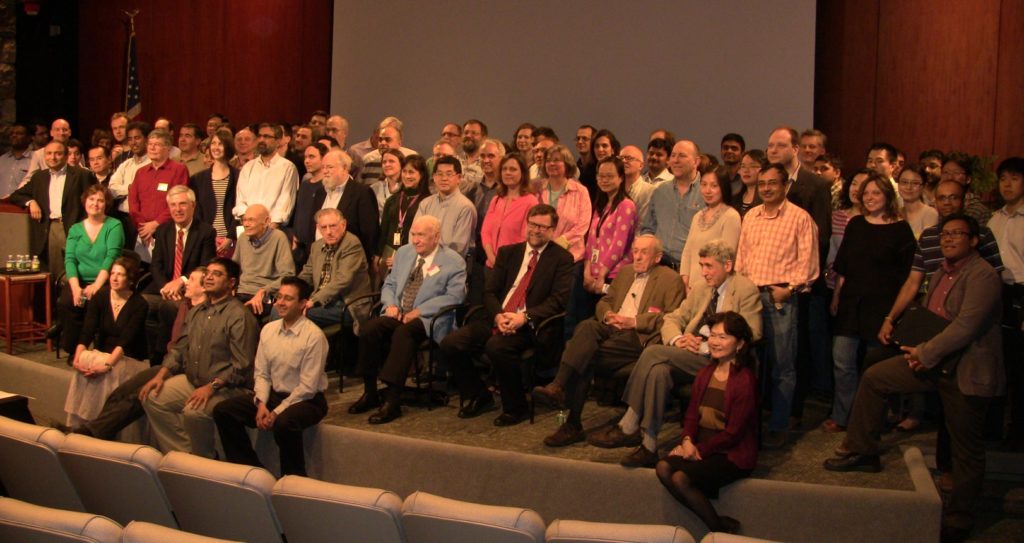
One thing that struck me when we were doing the research through the archives was how much more of a record we have of the first decade of the department than we do of the 40+ years afterwards. In those early days, each department did a typed report of its activities which was then sent to management and archived.
With the increasing use of email and, much later, digital photos, we just don’t have easy if any access to what happened month by month. As part of this 50+ Anniversary, I’m going to organize an effort to do a better job of finding and cataloging the documents, photos, and video of the department.
This should make it easier for future celebrations of the department’s history. I suspect I’m not going to make it to the 100th anniversary, but I just might get to the 75th. For the record for those who come after me, that will be in 2034.
